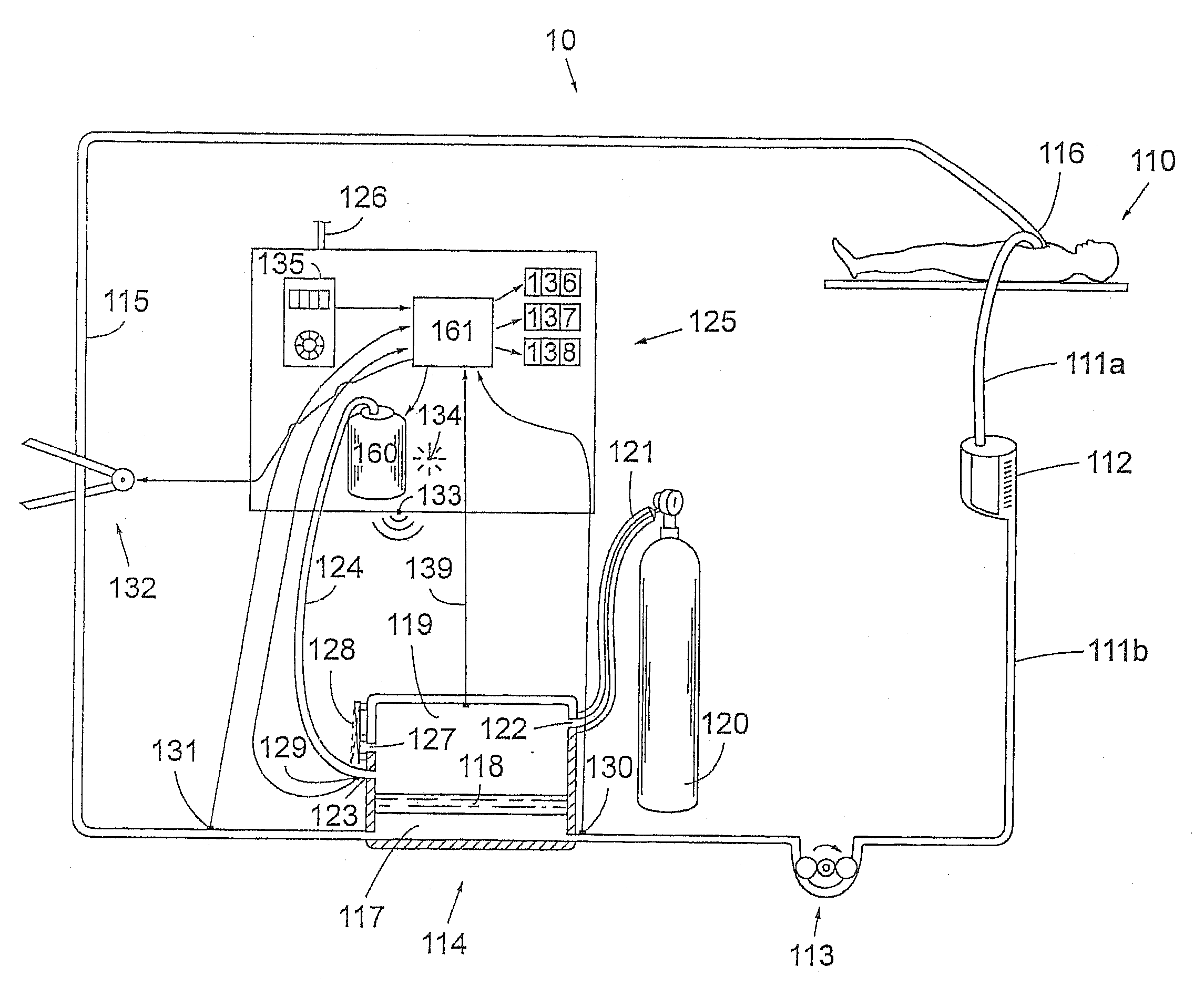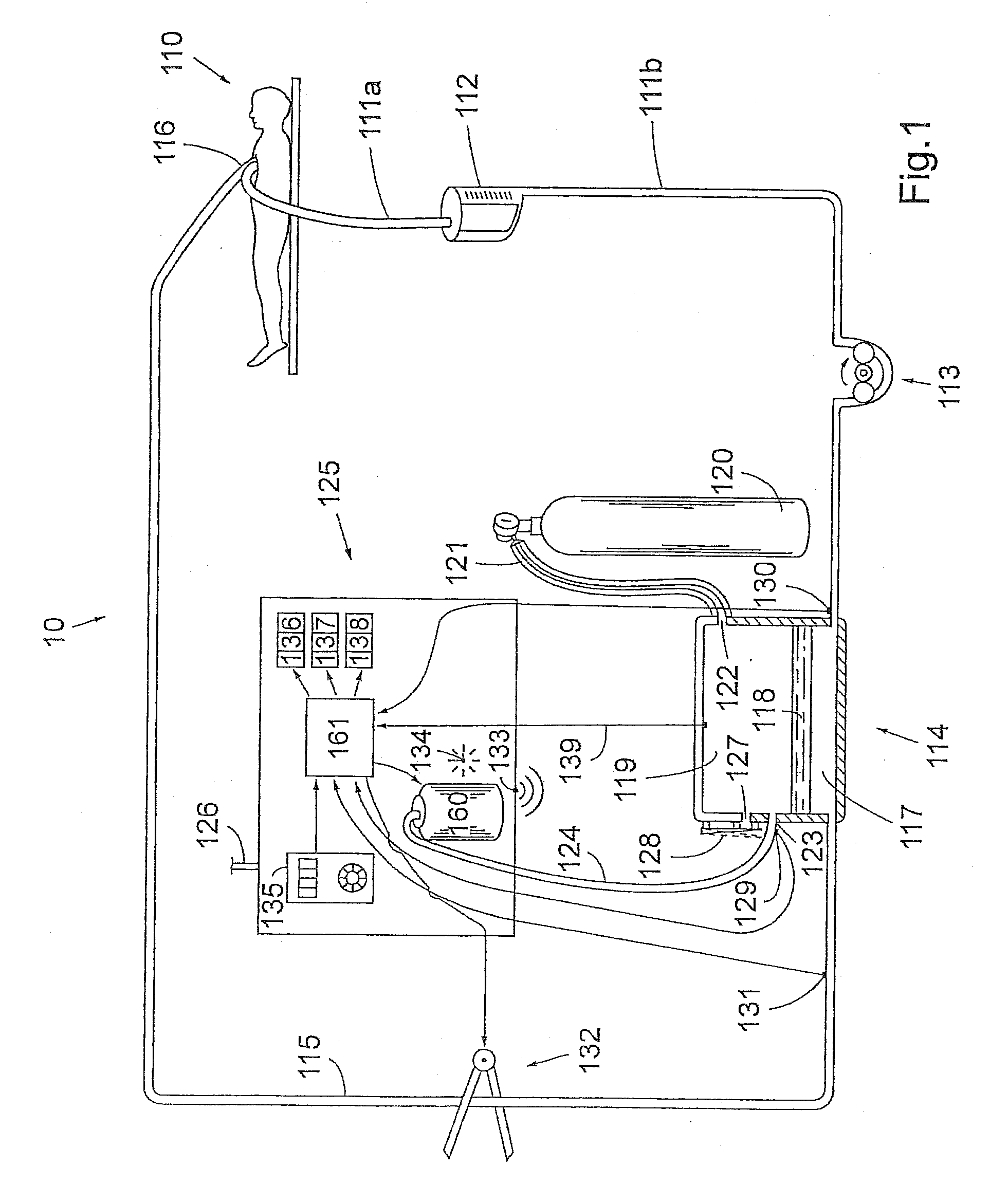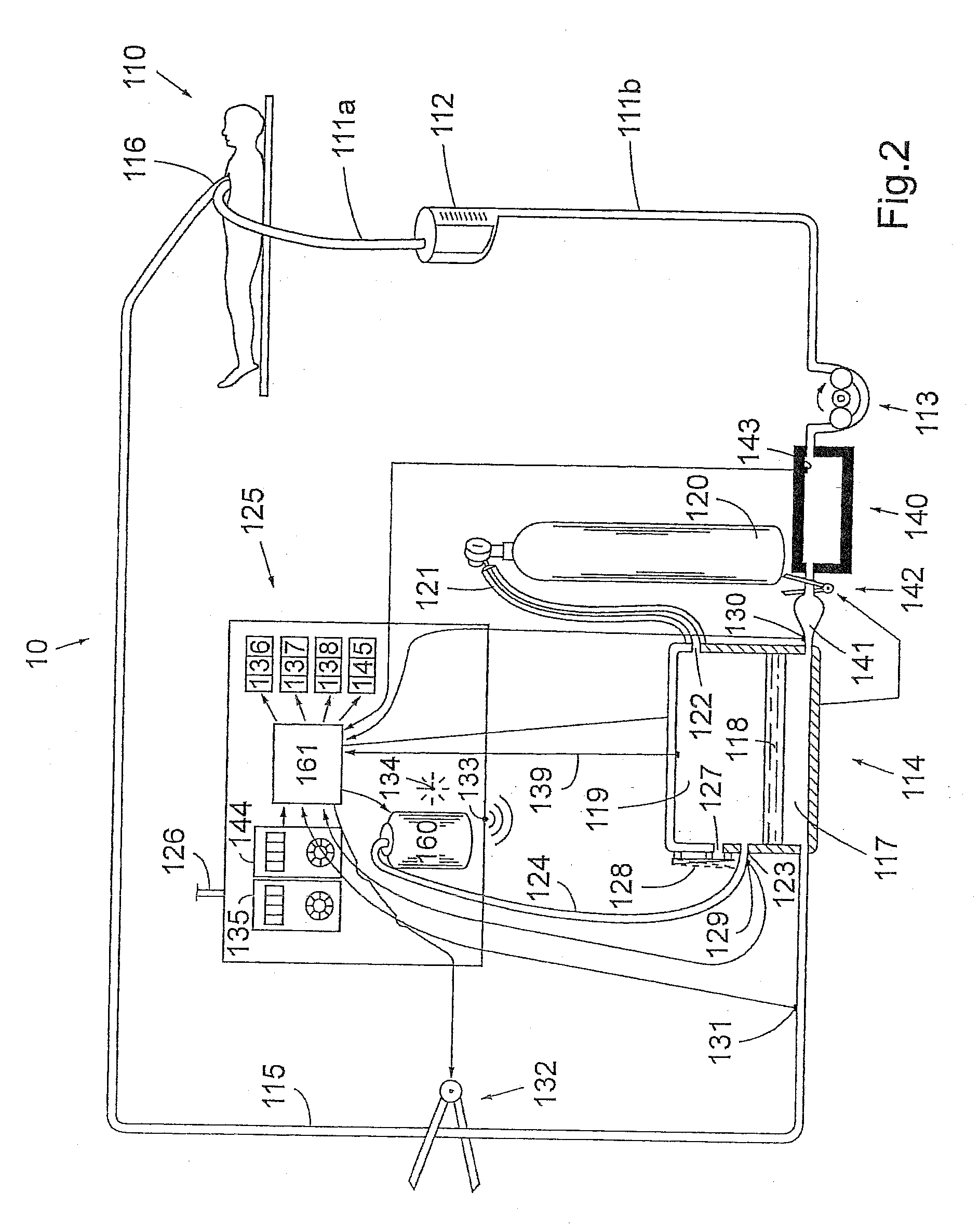Control of bubble formation in extracorporeal circulation
a technology of extracorporeal circulation and control of bubbles, applied in water/sludge/sewage treatment, dialysis, solvent extraction, etc., can solve problems such as annihilating bubbles completely
- Summary
- Abstract
- Description
- Claims
- Application Information
AI Technical Summary
Benefits of technology
Problems solved by technology
Method used
Image
Examples
first embodiment
[0023]FIG. 1 schematically depicts a system according to the present invention, which system 10 can be used in e.g. open heart surgery. The figure shows how the application of vacuum to a gas exchange means, such as an oxygenator, can be employed and also how an increased hydrostatic blood pressure during blood passage through the oxygenator can be generated according to the invention and setup of the device during extracorporeal perfusion.
[0024]An embodiment of the inventive system 10, according to FIG. 1, comprises tubings 111a by means of which venous blood can be diverted from a patient 110 to an extracorporeal venous reservoir 112. In this description, the tubing 111a will also be referred to as a venous line 111a. However it should be understood that the tubing also can be an arterial line in applications where arterial blood is to be withdrawn from the patient. The venous reservoir 112 is configured to collect, by gravity force or by an applied subatmospheric pressure, the ve...
second embodiment
[0039]the invention comprises means for the temporary increase of hydrostatic pressure of the blood in the extracorporeal circuit. The purpose of this pressure increasing means is to reduce bubble volume of gas by application of an increased hydrostatic pressure to the bubble-carrying liquid / blood. The increased hydrostatic pressure of blood will be propagated into the gas bubble, thus forcing gas from the bubble into solution, i.e. from gas phase to liquid phase. Subsequently, a new steady state is reached rendering the bubbles smaller not only because of the higher hydrostatic pressure but also from the loss of a portion of the original contained gas of the bubbles that becomes dissolved in the blood. At high enough levels of hydrostatic pressure applied and long enough time period of its application, even a complete annihilation of bubbles may be achieved.
[0040]FIG. 2 shows schematically the second embodiment of the invention comprising means for the temporary increase of hydrost...
third embodiment
[0046]It is important to be able to measure changes in bubble formation when the methods and equipment according to this invention are employed. In the invention, the inventive system contains means to monitor and document the occurrence of bubbles more properly than currently employed. Heart-lung machines contain bubble monitoring devices with sensors to be attached to the tubing and which are configured to warn the perfusionist when bubbles appear and they may also be configured to automa-tically halt the main pump in case larger bubbles occur. The sensitivity of the bubble sensors of heart-lung machines in common use, e.g. in Jostra HLM 20 and Stockert S3, is 300 micrometers, which is to be compared with the size of blood capillaries which may be in the range of the diameter of a single red blood cell i.e. 7 micrometers. The bubble detecting device already equipped into a heart-lung machine may therefore be too insensitive.
[0047]FIG. 3 shows schematically a third embodiment of th...
PUM
 Login to View More
Login to View More Abstract
Description
Claims
Application Information
 Login to View More
Login to View More - R&D
- Intellectual Property
- Life Sciences
- Materials
- Tech Scout
- Unparalleled Data Quality
- Higher Quality Content
- 60% Fewer Hallucinations
Browse by: Latest US Patents, China's latest patents, Technical Efficacy Thesaurus, Application Domain, Technology Topic, Popular Technical Reports.
© 2025 PatSnap. All rights reserved.Legal|Privacy policy|Modern Slavery Act Transparency Statement|Sitemap|About US| Contact US: help@patsnap.com



